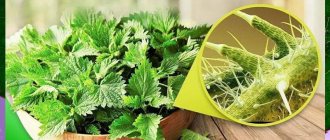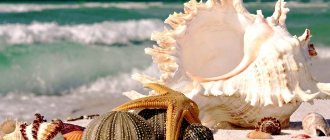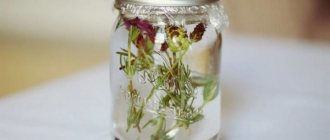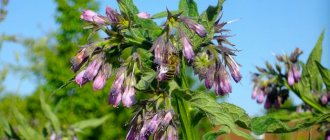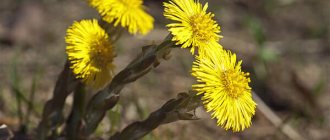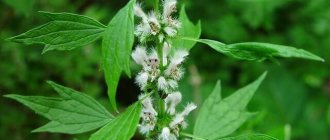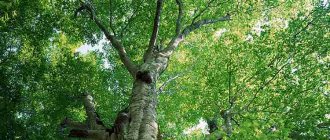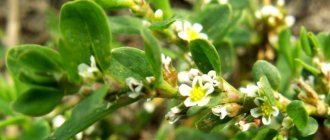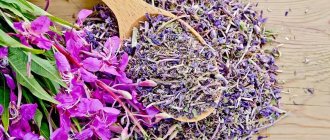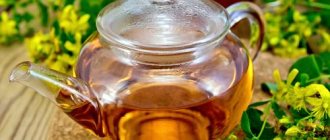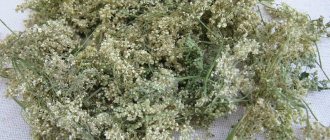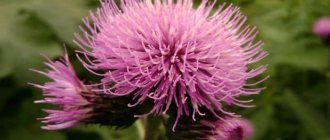Nettle (Urtica dioica) is a common sight in backyards and gardens, although it is often selected and tossed aside, sometimes even avoided due to its stinging properties.
The first documented use of this herb was for Roman soldiers to fight the cold by rubbing the leaves in their hands to cause inflammation and irritation. It has spread throughout the world, and has been used by doctors since the 19th century due to its abundance of chemicals and compounds that can help the body function optimally. The plant originated in Northern Europe and Asia, and nettle now grows throughout the world as a wild plant, growing to about 1 meter in height.
Nettle can be distinguished from other plants by its leaves. The leaves are oval in shape with deeply serrated edges. These leaves also have long stinging hairs that inject chemicals into the skin when a person accidentally touches or brushes them. These hairs often cause pain and can even cause inflammation of the skin in the affected area, commonly referred to as hives. Even though nettle is often shunned and considered a useless plant, it has been the subject of numerous studies confirming its value.
Directions for use and dosage
A decoction is prepared from nettle leaves. To do this, place 4 filter bags in an enamel or glass container, pour 1 cup (200 ml) of boiling water, cover with a lid and leave for 15 minutes, periodically pressing the bags with a spoon. If medicinal raw materials are used, 2 tbsp. pour 1 cup of boiling water, close the lid and leave in a boiling water bath for 15 minutes.
Then the bags/raw materials are squeezed out, the volume of the infusion is brought to the original volume using boiled water.
The medicine should be taken orally in a warm form, 1 tbsp. 3-4 times a day half an hour before meals. Immediately before taking, the infusion must be shaken.
pharmachologic effect
Nettle leaves contain copper, calcium, iron, magnesium, vitamin E, K, B, flavonoids, phytoncides, astringents, glycosides, chlorophyll, organic acids. All these substances give nettle healing properties and make it possible to use it as a tonic, healing, expectorant, laxative, choleretic, vasodilator, anti-inflammatory, immunostimulating, anticonvulsant.
External use of nettle leaves is practiced - for skin diseases, bleeding, open wounds, and hair problems.
Indications for use
Nettle is used to stop uterine, intestinal, hemorrhoidal bleeding, treat hypovitaminosis, cholecystitis, atherosclerosis, gastrointestinal ulcers, constipation, respiratory tract diseases, enterocolitis, nephrourolithiasis, iron deficiency anemia, gout, polymenorrhea, myalgia, diabetes, sore throat.
Externally, nettle leaves are used for purulent non-healing wounds, trophic ulcers, lichen, furunculosis, acne, bedsores. Rinsing the mouth with nettle decoction is practiced for gum problems.
In cosmetology, nettle leaves are used for hair to stimulate hair growth.
Description
Nettle is a perennial (some annual) herbaceous plant with greenish and small flowers that are located at the corners of the leaves. The stems and leaves are covered with stinging hairs, which can cause a slight burn if touched. Stinging nettle is slightly different from stinging nettle. The first can reach a height of up to 150 cm, it has large leaves and yellow dry fruits in the form of nuts. Stinging nettle is shorter, the height of its stems reaches 60-80 cm, the leaves are small, but more stinging than those of stinging nettle (hence the name).
the plant grows everywhere where a temperate climate prevails; it cannot be found only in the Far North and in the tropics. Prefers moist, nitrogen-rich soil. When brewing tea with fresh leaves, the infusion turns out golden in color with a slight greenish tint. The aroma and taste are rich and herbal. Dry grass gives the drink a brown color, a hay aroma and a slight bitter taste.
Contraindications, side effects and precautions
Before using the plant for medicinal purposes, you should familiarize yourself with the absolute contraindications:
- Intolerance to the plant or tendency to allergic manifestations.
- Phlebeurysm.
- Thrombophlebitis at any stage.
- Chronic hypertension.
- Blood disorders accompanied by increased clotting.
- Atherosclerotic changes in blood vessels.
- Internal bleeding caused by perforation of the stomach wall and the development of peritonitis.
- Taking coagulants as prescribed by a doctor.
- Severe liver failure.
- Kidney failure, kidney or bladder stones.
- Pregnancy period.
The drugs are used with extreme caution in the treatment of patients during lactation, as well as when diagnosing chronic pathologies of the intestines, stomach or kidneys.
If the recommendations are not followed, the drugs provoke adverse reactions in the form of a rash and itching of the skin, redness of the eyes. Possible lacrimation and allergic runny nose. In addition, taking medications can cause headaches, increased blood pressure and insomnia.
With long-term use of nettle-based infusions, there may be a deterioration in appetite and pain in the stomach, which is associated with the irritating effect of the herb on the walls of the organ.
Nettle is a unique medicinal plant that is distributed everywhere and is used for uterine, internal and other bleeding. With the correct and dosed use of drugs, the likelihood of complications is minimized, and the therapeutic effect allows you to reduce the number of medications.
Article design: Vladimir the Great
How to make nettle infusion and tincture for hair
The infusion is even easier to prepare because it does not need to be boiled. Take fresh or dried nettle leaves and pour hot water over them. It is not recommended to brew with boiling water, as it will destroy some of the beneficial substances. Let the mixture sit for at least 6 hours. Rub the infusion into the roots after each shampoo or use as a rinse.
The tincture is prepared in the same way. Only instead of water, vodka is used. Collect young nettles and fill an empty bottle with it, then simply top it with vodka. Leave for a month, strain and use, rubbing into the hair roots.
Composition, release form and packaging
Nettle leaves are released:
- In the form of dried crushed vegetable raw materials.
Active ingredients: 1 pack – 50 g of stinging nettle leaves.
Cardboard packaging contains paper bags with raw materials.
- In the form of a liquid nettle extract, without alcohol and sugar, concentrated.
In a cardboard package - 1 bottle with 30 ml.
- In the form of herbal tea from nettle leaves.
Cardboard packaging contains filter bags of 1.5-2 g each.
In a cardboard package there is a bag with 20-200 g of herbal tea.
Contraindications
Nettle leaves have contraindications for use:
- hypersensitivity;
- individual intolerance;
- hypercoagulability;
- increased blood clotting;
- bleeding caused by a tumor;
- diseases requiring surgical intervention;
- pregnancy, since decoctions increase the tone of the uterine muscles and may well cause premature birth;
- children under 12 years old.
Carefully:
- renal failure.
nettle in bags
Magical July July is the second month of summer, its very essence and quintessence: it is not yet time to prepare for autumn, but the first delights of June have already been replaced by calm, hot bliss. There are no “big” extremes or national holidays in July - Lammas still has the spirit of the beginning of August. Therefore, July is often discounted. And in vain: July is the time for thoughtful study of everything that there was not enough time for at other times of the year and for a wide variety of natural magic, which borders on relaxation, without losing its properties. Calendar of the main astronomical and ritual events for July 2016 July 4 - new moon (14:03 Moscow time, 1 lunar day continues until the next day) July 7 - Ivan Kupala according to the new church style July 20 - full moon (02:00 Moscow time ), full moon eve July 19-20, 20-21 July 31 - Lammas Eve What magical things can you do in July? :::Collect nettles!::: In July (according to the new style on July 12, according to the old style - at the end of June) in Rus' they celebrated the Nettle Spell - a cheerful day, with songs, dances, youth festivities, and, of course, with the collection of nettles. It was believed that on this day young nettle leaves were collected for soup for the last time. Nettle is a useful plant from all sides: in folk medicine, in esoteric practices, and in “green” cuisine. Try to guess the moment when a thunderstorm has just passed or during a thunderstorm, and collect some nettles right in the rain, under the echoes of distant lightning: such storm nettles are a powerful protective amulet, and such an amulet is of an active nature, not so much protecting as helping to fight enemies and ill-wishers (if you have them, of course), gives determination. Protective nettles are not dried after being collected in the rain; they are carried in a red rag or fabric bag. For those who are far from esoteric, nettle can be just a good addition to the summer table. By the way, in addition to soups (for example, there is a recipe here https://vk.com/wall-39461143_8570) you can also brew special summer beer from nettles https://vk.com/wall-39461143_9454 :::Relax in the fresh air!: :: And, of course, meditate - that is, put your inner state in order with the help of spiritual practices. If you have never meditated, July is one of the times when you can start. You don’t have to do this at home behind a closed door: a forest oak grove or flower field is also great for summer meditation. Just make sure that there are no wild dogs running around or mushroom pickers and other vacationers walking around in large numbers. By the way, you don’t have to meditate alone - the effect of joint meditation is very good. This should not be the same meditation for everyone - the main thing is that the group, having gathered, does not disturb each other with questions, and no one interrupts someone else's concentration. You can read more about the basics of meditation here https://vk.com/wall-39461143_10431 and for those who like the unusual, there are “meditations on the go”, perfect for summer walks: https://vk.com/wall-39461143_12756 ::: Seeing prophetic and magical dreams::: In Western witchcraft there is a belief that from July 21 to 22 there is a special chance to see a prophetic dream with a love and romantic theme. In principle, it is not necessary to adhere to the calendar here - but July is really conducive to working with dreams. Especially because the plants are at the peak of growth and flowering, and some have already begun to bear fruit. This means that there is a lot of material for creating sleeping pads and decoctions that attract prophetic dreams. Make yourself a sleepy pillow - for example, the simplest one, with hop fruits, wormwood shoots and rose petals - and interpret your dreams using a good dream book (we recommend the dream books of Tsvetkov and Miller). Or: Mix equal parts chamomile flowers, rose petals, rose geranium leaves and peppermint tops. :::Drink tea with fragrant herbs::: July is the time: there is so much fragrant, tasty, alluring food around! The most popular and widespread are rose hips (more precisely, the petals of its flowers), raspberry and currant leaves, chamomile flowers, shoots of mint and wormwood, nettle and St. John's wort. And, of course, fireweed (fireweed). For example, this recipe: Add 1 teaspoon each of anise, fennel, chamomile, bay leaf, lavender, peppermint, rosemary and thyme to a teapot. Add 1 teaspoon lemon juice. Pour boiling water over it and let it brew for 15 minutes. Drink hot. :::Enjoy the summer rains::: In the summer even the rains make you happy: warm, short-lived, often filled with mushrooms. There is nothing more comfortable than sitting on the country veranda in the evening with a cup of aromatic tea, listening to the patter of rain and reading an interesting book. But, however, it is possible to “apply” rain in practice. Rainwater (collected in the village - away from industrial zones!) can be used both as a base for tinctures and elixirs, and for spraying the home for cleansing purposes. Thunderwater is used along with protective amulets. Midday rainwater is used for healing (naturally, as an additional remedy), for example, by sprinkling the sick person’s room. You can read more about rain magic here: https://vk.com/wall-39461143_9571 :::Practice sea magic::: Marine natural practices are an important part of Western modern witchcraft. Although the sea belongs to the element of Water, it is often even isolated separately - not so much as an element, but as a phenomenon, a powerful force. Anyone who has been to the seashore feels this gentle but constant influence (you don’t need to believe in any gods for this). If you find yourself at sea in July, you can, for example, find a sea talisman - a shell or a pebble right under your feet (we wrote about the choice of such talismans here https://vk.com/wall-39461143_1527) You can draw a five-pointed star in the sand (pentagram) - where it can be washed away by the waves of the surf, and also sprinkled with a few fresh rose petals as a modern analogue of a sacrifice to the forces of Nature and the feminine aspect of the Divine. Alternatively, you can write down your wish on a piece of paper, put it in a bottle, cap it and throw it into the sea. :::Listen to the whisper of the wind:::And recognize in it the answers to your questions. In the summer, we have many new opportunities for fortune telling - from the whisper of the wind in the branches, from herbs, even from soap bubbles! Don't miss this chance. You can read more at https://vk.com/wall-39461143_8633 and https://vk.com/wall-39461143_8604 And for those who study Tarot and runes, summer is a new opportunity to try the layout in natural conditions, using a “natural table” instead of a special blanket and floral aromas - instead of special fumigations at home. The results may surprise you! :::Read more::: Inspirational, bright, adventure, magical - all this is perfect for summer reading. We collect special lists to make it easier to find an interesting book to your liking - for example, here: https://vk.com/topic-39461143_33102010 In addition, you can prepare a special reading tea: 1 tsp. Ceylon loose leaf tea 1 tsp. red rose petals (not sprayed with chemicals; rosehip petals can be substituted) 1 tsp. rosemary 1 tsp. peppermint leaves Mix the ingredients indicated in the recipes, pour in 2 cups of boiling water and let steep for 3-4 minutes. Strain the herbs, or immediately place them in a strainer or tea bag. Add honey, caramelized dark sugar or a little lemon to taste if desired.
Terms and conditions of storage
Store in a dry place, protected from light and out of reach of children.
The shelf life of plant materials is 2 years, the prepared infusion is 2 days if stored in a cool place.
Found an error in the text? Select it and press Ctrl + Enter.
Nettle tea is a healthy hot drink with a rich vitamin and mineral composition. It can be easily prepared at home using fresh or dried nettle leaves. Sugar, honey, lemon, spices, fresh or frozen berries are added to tea.
How to make a nettle hair scrub
From nettle pulp you can easily prepare not only a mask, but also a scrub. Just add salt to it, preferably sea salt. This scrub is especially useful for oily hair. It normalizes increased sebum secretion, protects against hair loss and gives it shine.
Wash your hair before using the scrub. The mechanism for using it on the head is simple: take a little mixture in your hands and rub it into the skin in a circular motion.
Collecting leaves
Young nettles are collected from May to August (during this period the plant actively blooms), in dry weather in the afternoon. The plant is cut with a scythe or sickle at a height of one third above ground level. After collection, the plant is dried in a place protected from the sun for three hours. This process reduces the “hotness” of the herb, making it possible to separate the leaves from the stems with bare hands without causing irritation. The next step is drying. Nettle leaves are laid out on paper or wide-mesh fabric and left to dry in well-ventilated areas. To avoid steaming, the leaves are laid out in a thin layer and mixed periodically. During the process, rotten leaves are removed; they are brown or black in color. The finished raw material has a rich dark green color with a characteristic herbal and hay aroma. Next, the leaves are packaged in paper or cardboard packages.
Some industries use artificial drying of leaves. They are placed in special ovens or dryers and dried at temperatures up to 50 degrees. This significantly speeds up the process, but increases the risk of drying out the leaves. In this case, the tea may have a strong bitterness. Some manufacturers ferment the leaves after drying, which gives the drink a beautiful dark hue. When making filter bags, nettles, after drying, are finely crushed and packaged using automated technology.
Properties
The chemical composition of medicinal nettle has a beneficial effect on the entire body:
- formic acid is a natural antiseptic, has antimicrobial, anti-inflammatory and analgesic effects;
- glycoside urticin - has an effect on the entire body, tones, stimulates the functioning of important systems;
- ascorbic acid – accelerates metabolism and strengthens the immune system;
- tannins – remove toxins from the body, stop bleeding, have an anti-inflammatory effect;
- carotenoids – valuable natural immunostimulants and antioxidants;
- chlorophyll – increases hemoglobin.
